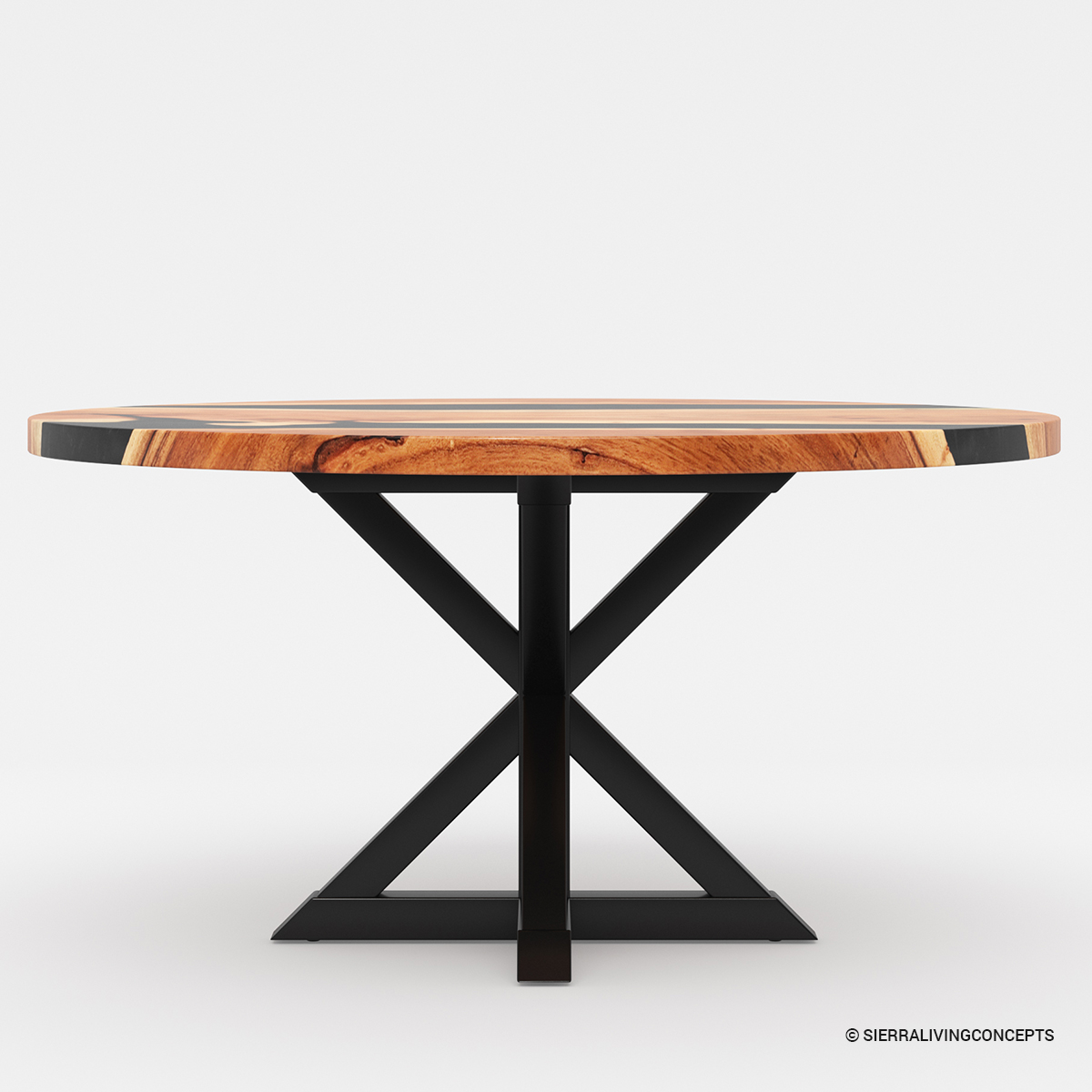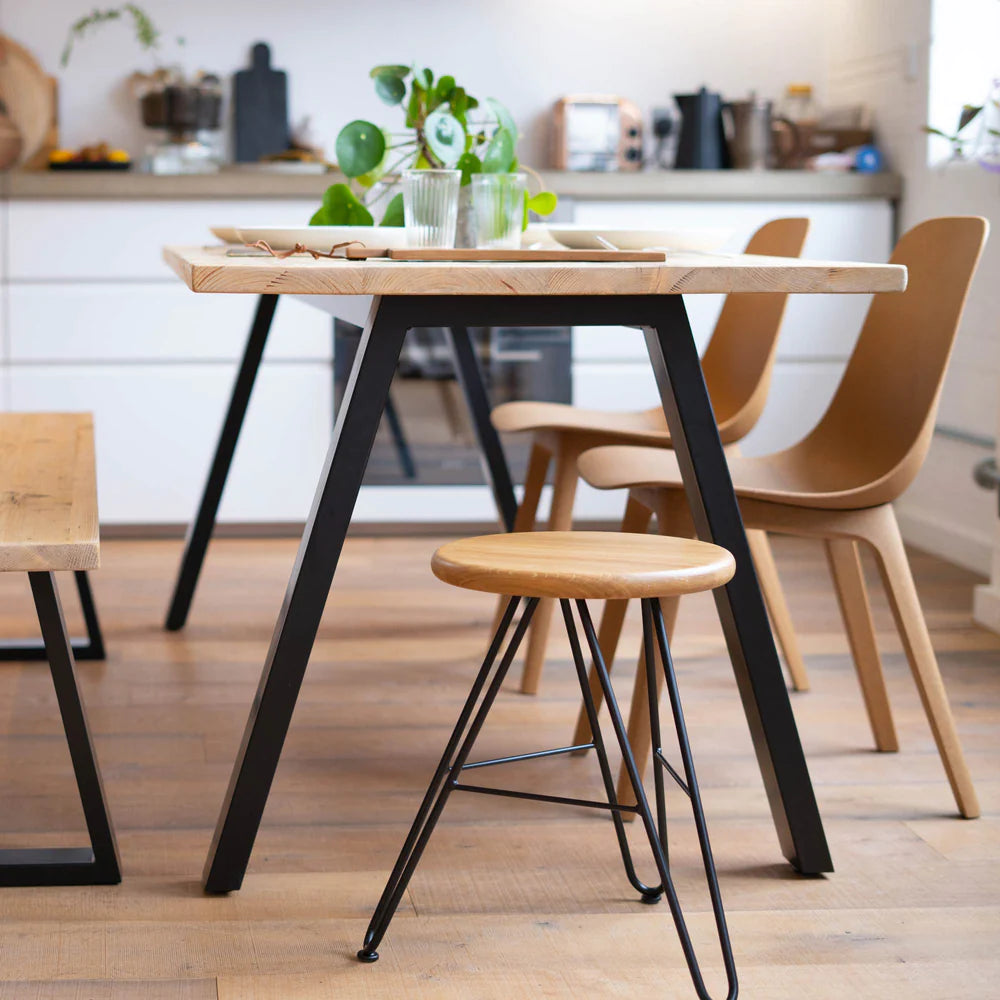From Standard to Modern: Find the Perfect Eating Area Table Legs for Your Style
While traditional styles such as cabriole and transformed legs stimulate a sense of ageless sophistication, modern designs like hairpin and geometric options provide a possibility for striking aesthetic rate of interest. As you take into consideration these elements, the question stays: just how can you effortlessly incorporate these diverse leg styles to create a harmonious eating experience?
Understanding Table Leg Styles
The range of dining-room table leg designs can considerably affect both the aesthetics and performance of the space. Each leg design adds special sensible features and aesthetic components, accommodating diverse design preferences and use needs. Understanding these styles is essential for selecting the ideal table that aligns with your overall interior decoration vision.
For circumstances, tapered legs provide a clean, classic look that can boost a space's sophistication, while stand bases supply stability and take full advantage of legroom, making them ideal for smaller spaces. Barrette legs, a trademark of mid-century contemporary layout, present a commercial panache, permitting a ventilated, open feeling. Trestle legs stimulate rustic appeal, giving durable assistance and a sense of eternity.
In addition, the option of materials plays a considerable role. Wooden legs can bring warmth and structure, whereas metal alternatives commonly share a streamlined, modern vibe. Eventually, recognizing table leg styles is vital for producing a natural dining location that reflects individual style while guaranteeing usefulness and convenience. By attentively taking into consideration these elements, you can improve both the useful and visual allure of your dining space.
Typical Table Leg Options
When selecting dining-room table legs, standard options typically personify classic elegance and craftsmanship. These styles mirror an abundant heritage and a dedication to quality, making them suitable for those who value classic visual appeals.
One of one of the most renowned traditional leg styles is the cabriole leg, identified by its stylish curved shape. This layout usually includes attractive carvings and is most commonly discovered in Queen Anne and Chippendale furnishings. Another popular option is the transformed leg, which flaunts a series of smooth, rounded shapes that provide a timeless appearance while keeping stability.
Moreover, the straight leg, while straightforward, offers a durable and basic framework that can blend effortlessly with a selection of tabletop styles. For those drawn to ornate outlining, claw-and-ball feet legs evoke a feeling of grandeur and can work as a stunning focal factor in any kind of eating space.
Last but not least, stand bases, although not strictly legs, supply an alternative traditional choice that enables ample legroom and can be magnificently sculpted. Each of these typical leg designs adds to the total setting of a dining-room, marrying function with aesthetic appeal.

Modern Table Leg Layouts
Modern table leg layouts supply a varied variety of styles that stress clean lines and cutting-edge materials. These layouts often prioritize functionality while acting as striking focal factors within an eating space. Minimalist looks prevail, with legs crafted from materials such as steel, glass, and engineered timber, which add to a modern and airy feeling.
One preferred style is the barrette leg, characterized by its slim, tapered structure that provides stability without overwhelming the tabletop (dining room table legs). This design is usually located in mid-century contemporary furniture and can effortlessly complement different dining table shapes. An additional fad is using geometric shapes, where legs might take on unbalanced or angular forms, including aesthetic interest and a touch of creativity

Blending Designs for Distinct Rooms
Frequently, house owners look for to create one-of-a-kind dining rooms that mirror their individual design by blending different layout elements. This approach permits for the unification of varied aesthetics, causing an unified yet distinct setting. For instance, pairing a rustic wood table with smooth, contemporary metal legs can create an attractive comparison that boosts the room's overall allure.
In addition, incorporating vintage table legs with contemporary tabletops can stimulate a sense of background while preserving a modern-day perceptiveness. Such combinations not just display individual preference however likewise urge creativity, enabling house owners to curate an area that feels both individual and inviting.
Color plays a vital function in this mixing procedure; picking table legs that complement or comparison with the existing color design can improve visual rate of interest. For instance, whitewashed legs can soften the daring of a dark table surface, producing a well balanced visual.
Tips for Picking the Right Legs
Picking the right table legs is crucial for attaining both capability and aesthetic appeal in your eating space. Begin by thinking about the total design of your space. Conventional setups gain from legs that feature complex makings or transformed designs, visit this website while modern rooms may ask for streamlined, minimal designs.
Following, analyze the elevation and stability of the legs. dining room table legs. Typical table range in between 28 to 30 inches in elevation, so make sure the legs enhance this dimension for convenience. In addition, durable materials, such as wood or steel, can improve security and long life
Assess the leg form also-- choices consist of right, tapered, or stand designs. Straight legs provide a timeless appearance, while conical legs can add a touch of beauty. Pedestal bases provide sufficient legroom and are perfect for smaller sized areas.
Final Thought
In recap, picking the excellent eating room table legs requires careful consideration of both conventional and modern styles. Traditional alternatives such as cabriole and transformed legs use ageless sophistication, while modern-day layouts like barrette and geometric forms give a modern touch. By balancing leg style, elevation, and product with the general decoration, a natural and inviting atmosphere can be achieved. Inevitably, the selected table legs ought to show the desired visual, boosting the eating experience within the room.
The range of dining area table leg styles can substantially influence both the visual appeals and capability of the space. Ultimately, recognizing table leg designs is necessary for creating a natural dining area that shows personal design while ensuring functionality and comfort.One of the most legendary standard leg designs is the cabriole leg, characterized by its elegant curved form. Straight legs offer a traditional appearance, while conical legs can include a touch of elegance.In summary, picking the suitable address dining space table legs needs careful factor to consider of both contemporary and standard styles.
Comments on “Why Custom Dining Room Table Legs Are Worth the Investment”